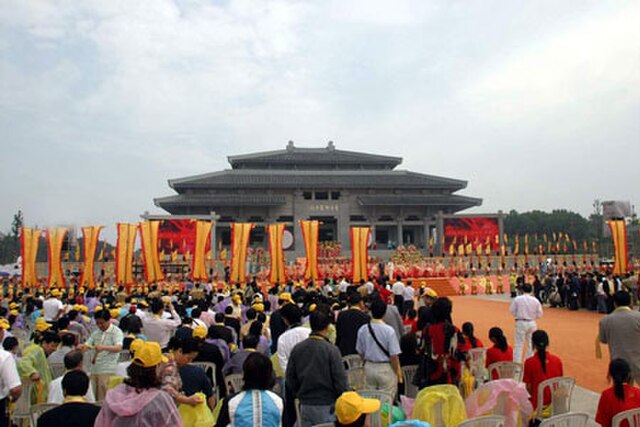In the study of comparative religion, the East Asian religions or Taoic religions, form a subset of the Eastern religions. This group includes Chinese religion overall, which further includes ancestor veneration, Chinese folk religion, Confucianism, Taoism and popular salvationist organisations, as well as elements drawn from Mahayana Buddhism that form the core of Chinese and East Asian Buddhism at large. The group also includes Japanese Shinto, Tenrikyo, and Korean Muism, all of which combine Shamanistic elements and indigenous ancestral worship with various influences from Chinese religions. Chinese salvationist religions have influenced the rise of Japanese new religions such Tenriism and Korean Jeungsanism; as these new religious movements draw upon indigenous traditions but are heavily influenced by Chinese philosophy and theology. All these religious traditions generally share core concepts of spirituality, divinity and world order, including Tao ('way') and Tian ('heaven').

Worship ceremony at the Great Temple of Yandi Shennong in Suizhou, Hubei – an example of Chinese folk religion
Main hall of the City of the Eight Symbols in Qi County, Hebi, the headquarters of the Weixinist Church in Henan. Weixinism is a Chinese salvationist religion.
Altar to Shangdi (上帝 "Highest Deity") and Doumu (斗母 "Mother of the Great Chariot"), together representing the principle of the universe in masculine and feminine form in some Taoist cosmologies, in the Chengxu Temple of Zhouzhuang, Jiangxi.
Temple of Confucius in Liuzhou, Guangxi.
Comparative religion is the branch of the study of religions with the systematic comparison of the doctrines and practices, themes and impacts of the world's religions. In general the comparative study of religion yields a deeper understanding of the fundamental philosophical concerns of religion such as ethics, metaphysics and the nature and forms of salvation. It also considers and compares the origins and similarities shared between the various religions of the world. Studying such material facilitates a broadened and more sophisticated understanding of human beliefs and practices regarding the sacred, numinous, spiritual and divine.
A statue of Ibn Hazm, father of modern comparative religious studies, in Córdoba Spain.
The Rig Veda is one of the oldest Vedic texts. Shown here is a Rig Veda manuscript in Devanagari, early nineteenth century.






